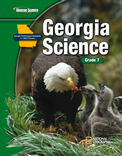1 <a onClick="window.open('/olcweb/cgi/pluginpop.cgi?it=jpg::::/sites/dl/free/0078778425/516795/cd.jpg','popWin', 'width=380,height=249,resizable,scrollbars');" href="#"><img valign="absmiddle" height="16" width="16" border="0" src="/olcweb/styles/shared/linkicons/image.gif"> (31.0K)</a> A) 60% B) 75% C) 67% D) 66% 2 <a onClick="window.open('/olcweb/cgi/pluginpop.cgi?it=jpg::::/sites/dl/free/0078778425/516795/cd.jpg','popWin', 'width=380,height=249,resizable,scrollbars');" href="#"><img valign="absmiddle" height="16" width="16" border="0" src="/olcweb/styles/shared/linkicons/image.gif"> (31.0K)</a> A) urine B) lungs C) skin D) feces 3 A) oxidation. B) breathing. C) respiration. D) expiration. 4 <a onClick="window.open('/olcweb/cgi/pluginpop.cgi?it=jpg::::/sites/dl/free/0078778425/516795/ce.jpg','popWin', 'width=242,height=258,resizable,scrollbars');" href="#"><img valign="absmiddle" height="16" width="16" border="0" src="/olcweb/styles/shared/linkicons/image.gif"> (20.0K)</a> A) capillary—circulatory B) alveolus—respiratory C) nephron—urinary D) ureter—excretory 5 A) Rescuer stands behind victim and wraps arms around victim's upper abdomen; rescuer places fist against victim's stomach; rescuer thrusts fist up into area below ribs; rescuer repeats action as many times as necessary. B) Rescuer places fist against victim's stomach; rescuer thrusts fist up into area below ribs; rescuer stands behind victim and wraps arms around victim's upper abdomen; rescuer repeats action as many times as necessary. C) Rescuer places fist against victim's stomach; rescuer thrusts fist up into area below ribs; rescuer repeats action as many times as necessary. D) Rescuer stands in front of victim; rescuer places fist against victim's stomach; rescuer thrusts fist up into area below ribs; rescuer repeats action as needed. 6 A) glands B) vocal cords C) nasal hairs and mucus D) epiglottis 7 <a onClick="window.open('/olcweb/cgi/pluginpop.cgi?it=jpg::::/sites/dl/free/0078778425/516795/cf.jpg','popWin', 'width=380,height=255,resizable,scrollbars');" href="#"><img valign="absmiddle" height="16" width="16" border="0" src="/olcweb/styles/shared/linkicons/image.gif"> (38.0K)</a> A) .45 L B) .47 L C) .50 L D) .74 L 8 <a onClick="window.open('/olcweb/cgi/pluginpop.cgi?it=jpg::::/sites/dl/free/0078778425/516795/cf.jpg','popWin', 'width=380,height=255,resizable,scrollbars');" href="#"><img valign="absmiddle" height="16" width="16" border="0" src="/olcweb/styles/shared/linkicons/image.gif"> (38.0K)</a> A) Mr. Stoler B) Mr. Jemma C) Mr. Lowe D) Mr. Cheng
















